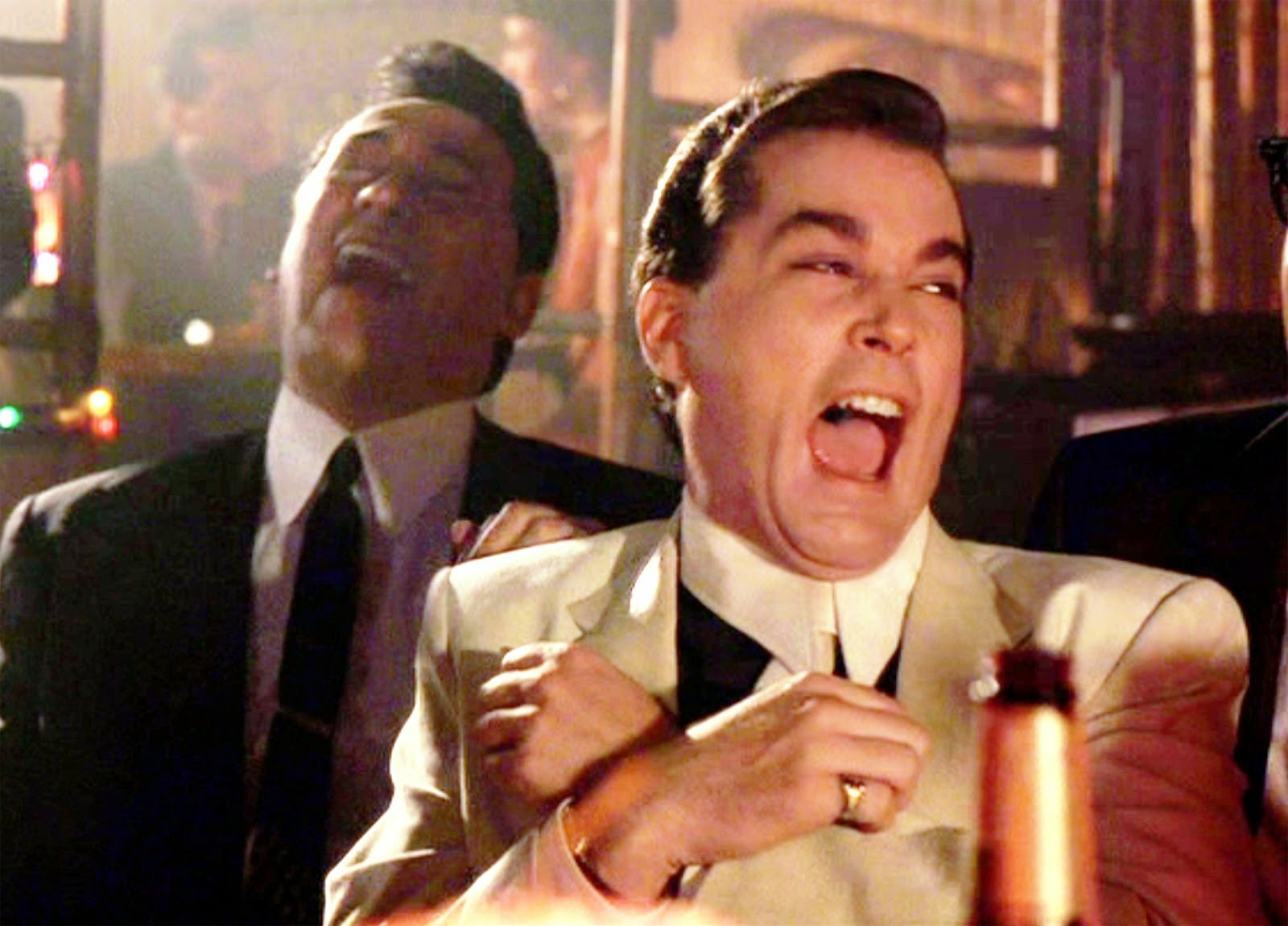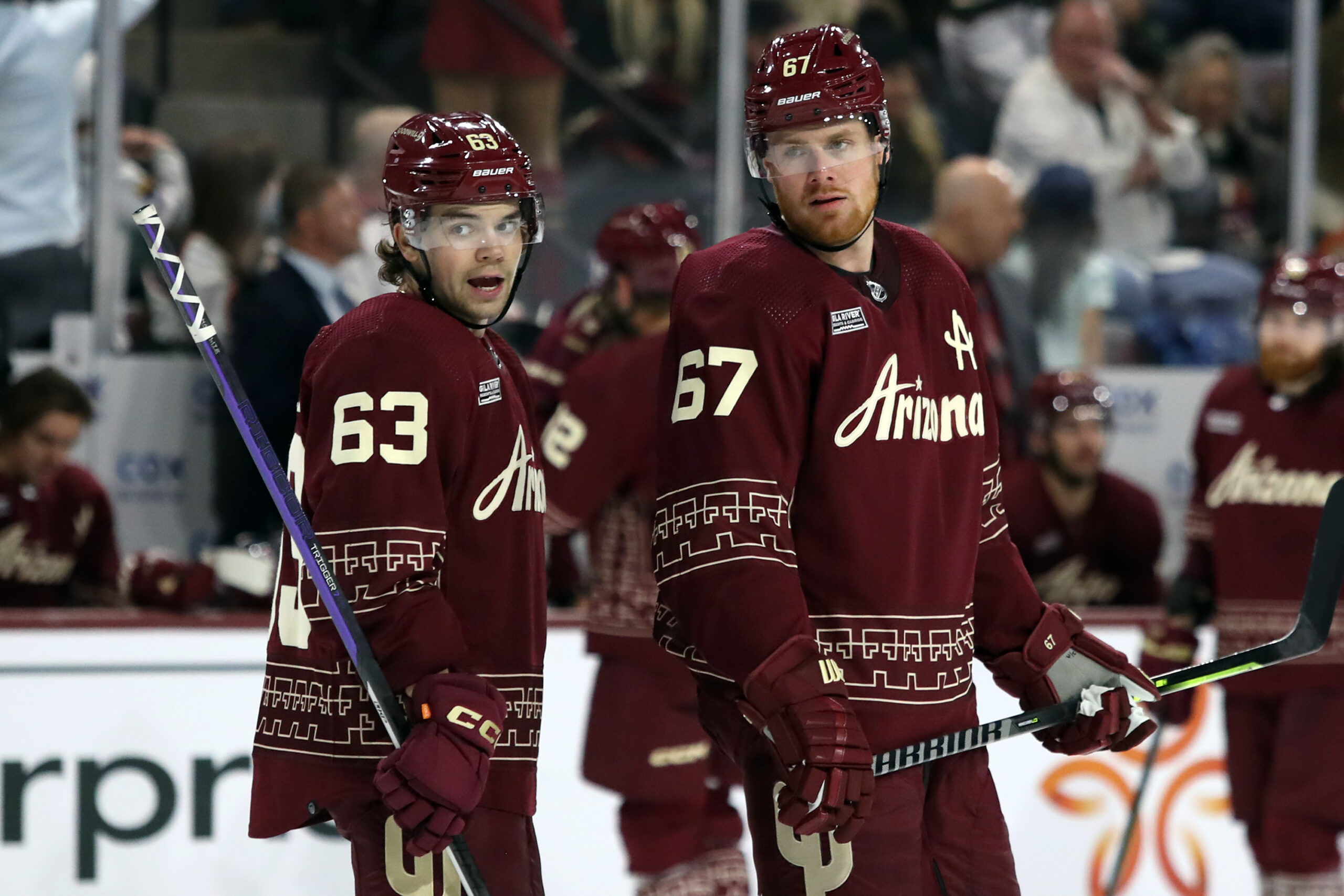© 2025 ALLCITY Network Inc.
All rights reserved.

The benefits (and drawbacks) of a community as tightly knit as the Coyotes community is that most of you know me too well. You know my strengths and my weaknesses. You know my likes and my dislikes. You know my standards and my pet peeves.
I don’t like mock drafts because they are guesswork at best. It baffles me that journalists willingly post content that they know will be mostly incorrect. It runs counter to a core principle of the job. I don’t buy the counterarguments that “it’s all in good fun,” or “it drives readership.” There are plenty of ways to have fun and drive readership in this industry. Inaccurate content designed solely as clickbait should not be one of them.
I don’t like draft grades, trade grades or free agency grades either. While the impassioned defenses or critiques of the Coyotes’ 2023 draft were amusing reads, nobody knows how those moves will pan out until the players play actual NHL games; not even the scouts and executives who made those choices with far more information at their disposal than the aforementioned defenders and critics.
I don’t like suggesting which players a team should pursue in free agency or in trades. It smacks of arrogance. I know with certainty that NHL executives laugh when they read these stories. We are not pro scouts. We are not trained in player evaluation. Even with the benefit of analytics (which teams use far less than many journalists realize), we do not have anywhere near the level of information on players that trained evaluators possess. Quite frankly, who cares what we think?
My stance on this sort of content can be traced to a three-part lesson that one of my greatest mentors taught me two decades ago. Humble yourself before the job. Know what you don’t know. Don’t pretend to be something that you are not.
With all of that as backdrop, I hesitated to publish this story. I possess only a fraction of the information on the Coyotes roster that the coaching and management staffs possess. I don’t know which players’ playing styles they think will mesh best and why. I don’t know which personalities will mesh best. I don’t fully understand how certain line or pair combinations might weaken other parts of the lineup in general, or with respect to matchups. The coaches won’t even have a full understanding of those dynamics until they get the players on the ice and watch the myriad human variables produce outcomes.
If you are a PHNX Diehard, you have probably seen the scores of potential lineups floated by our subscribers in our active Discord channel since the Coyotes added Sean Durzi, Jason Zucker, Alex Kerfoot, Nick Bjugstad and Troy Stecher this summer.
The Coyotes offseason has not ended. There could be changes to this lineup. Maybe that longshot Matt Dumba pursuit will still pan out. Maybe Logan Cooley will change his mind about his sophomore season at Minnesota. Maybe a cap-strapped team will knock the Coyotes’ socks off with a trade proposal to take on another bad contract. Maybe an attractive player will become available on waivers just as Juuso Välimäki and Connor Ingram were last season.
But with 47 of the maximum 50 roster slots filled, and restricted free agents Jack McBain and Jan Jeník still likely to be signed, there isn’t a lot of wiggle room on this roster. Most of the chess pieces are at least out of the box and on the table.
With that in mind, I sat down with cohort Steve Peters to hammer out some potential line combinations and defense pairs for opening night on Oct. 13 in New Jersey. Peters’ input gives me comfort because he was an NHL coach for 23 years. He understands systems, he understands player dynamics and he understands how coaches construct lineups.
He watched and collaborated in the process while such notables as Jim Schoenfeld, John Tortorella, Bobby Francis, Rick Bowness, Wayne Gretzky, Ulf Samuelsson, Barry Smith, Dave Tippett, Dave King, Jim Playfair, Newell Brown, Rick Tocchet, Scott Allen, John MacLean and Phil Housley constructed lines and pairs.
In short, if our projections are wrong, blame Petey.

I’m almost certain that coach André Tourigny and assistants John Madden, Mario Duhamel, Blaine Forsythe, Corey Schwab and Hunter Cherni will get a good laugh out of this exercise. But the idea of the Coyotes staff passing this around and mocking it like Goodfellas brings a smile to my face. Coaches are under the microscope every day on the job. Turnabout is fair play.
As an added element of fun, we’re going to run a contest to see which of you can come closest to predicting the opening-night lineup. We’ll announce more information on that contest in October when we’re ready to begin.
Without further ado, here are some possible forward and defense combinations with thoughts on the reasoning, potential strengths and potential weaknesses of each configuration.
Let the debates (and coaches’ laughter) begin.

Coyotes lineup 1
Forwards
| Left wing | Center | Right wing |
| Clayton Keller | Barrett Hayton | Nick Schmaltz |
| Jason Zucker | Nick Bjugstad | Dylan Guenther |
| Lawson Crouse | Jack McBain | Matias Maccelli |
| Alex Kerfoot | Travis Boyd | Michael Carcone |
| Extra: Liam O’Brien |
Defensemen
| Left defense | Right defense |
| JJ Moser | Sean Durzi |
| Juuso Välimäki | Troy Stecher |
| Vladislav Kolyachonok | Victor Söderström |
| Extra: Josh Brown |
Goalies
| Karel Vejmelka |
| Connor Ingram |
Reasoning, potential strengths, potential weaknesses: Alex Kerfoot figures to play mostly on the wing except in the event of injuries. That leaves four centers in Hayton, Bjugstad, McBain and Boyd. Keeping Hayton, Keller and Schmaltz together makes sense after their success late last season. Maybe Hayton will take another step by playing with two such highly skilled players all season.
Keeping McBain, Crouse and Maccelli together also makes some sense, while putting Bjugstad and Zucker with Guenther could be a good way of shepherding Guenther into NHL adulthood. It also makes sense to play Guenther with skill if he is going to play in the NHL instead of spending another season developing in the AHL.
The problem with this forward combination is that it seemingly diminishes Kerfoot’s role on the fourth line unless Tourigny is comfortable giving the bottom nine somewhat equal ice time, which he might be, given the composition. The only players playing on their off side in this configuration are the left-handed Maccelli and Carcone. Maccelli, an NHL All-Rookie team selection, is clearly comfortable in that slot.
On defense, putting Durzi on the top pair is a bit of a risk because the Coyotes’ system does not afford defensemen the same level of protection as LA’s. The benefit of this current alignment is that it gives Duhamel, who will coach the defensemen, a lefty-righty split on all three pairs.
If Söderström is going to play in the NHL this season, he needs to play. It makes little sense to slot him as the seventh defenseman when he might be better served developing another season in Tucson. The same goes for Kolyachonok, who has really impressed the Roadrunners staff with his consistency, focus and work ethic.
Brown played a lot of minutes last season and he is the only defenseman on this entire unit who can bring a physical element to the game so it may not make sense to put him in the seventh slot. Stecher could find himself in that role instead, but he also lends a veteran presence that is lacking on this blue line.
One other player to watch is Michael Kesselring, another right-handed defenseman who can bring a physical element.

Lineup 2
Forwards
| Left wing | Center | Right defense |
| Clayton Keller | Barrett Hayton | Nick Schmaltz |
| Lawson Crouse | Nick Bjugstad | Matias Maccelli |
| Jason Zucker | Jack McBain | Alex Kerfoot |
| Michael Carcone | Travis Boyd | Dylan Guenther |
Defensemen
| Left defense | Right defense |
| JJ Moser | Victor Söderström |
| Juuso Välimäki | Sean Durzi |
| Troy Stecher | Josh Brown |
| Extra: Travis Dermott |
Goalies
| Karel Vejmelka |
| Connor Ingram |
Reasoning, potential strengths, potential weaknesses: In this configuration the Coyotes would reprise the second line that was so effective before they traded Bjugstad to the Edmonton Oilers at the deadline. If they aren’t comfortable giving Guenther heavy 5-on-5 minutes yet, they could still play him on a fourth line with some skill while asking Kerfoot to play the off wing (versatility is one of his strengths) on the McBain-Zucker pairing.
On defense, if the Coyotes really want to know what they have in Söderström they could give him a long look in the role for which he was drafted four years ago while putting the veterans, Stecher and Brown, together on a third pair that could also kill penalties. Arizona really does not have an NHL-ready defenseman whom you could label a top-pair guy. As a result, there is room for a lot of experimentation and ice time with all three pairs.

We haven’t yet talked about goalies Karel Vejmelka and Connor Ingram. In both configurations we have the incumbent, Vejmelka, in the starter’s role. Ingram played in just 27 games last season to Vejmelka’s 50, but Ingram had better numbers than Vejmelka in goals against average, save percentage, quality start percentage, goals saved above average, and goals saved above expected.
This will likely be more of a legitimate competition than outsiders realize after Ingram signed a three-year extension this summer, giving him one more year of term remaining on his contract than Vejmelka has on his deal.
Given his inconsistency last season, it’s a safe bet that Ivan Prosvetov will spend another season in Tucson wth some call-ups. Prosvetov could face stiff competition from offseason signing Matt Villalta.
Top photo of Nick Schmaltz, Karel Vejmelka and Clayton Keller via Getty Images
Follow Craig Morgan on Twitter
Comments
Share your thoughts
Join the conversation



